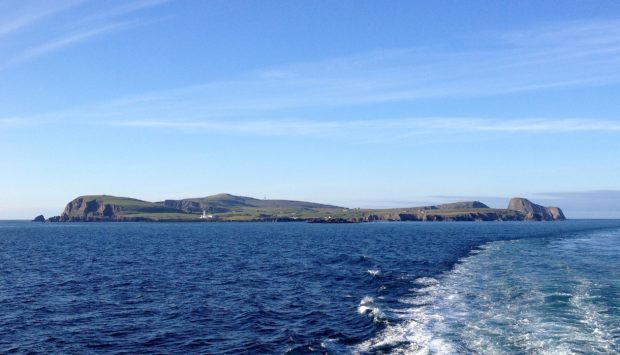A private plane skidded off the gravel runway on a remote Scottish island after its commercial pilot became “over-relaxed” and failed to notice he was landing too fast, investigators have ruled.
The aircraft, a single-engined 2001 Piper Piper Saratoga with five passengers on board, slid sideways off the prepared surface at low speed while landing at Fair Isle airfield in Shetland.
>> Keep up to date with the latest news with The P&J newsletter
No-one was hurt but the right main landing gear partially collapsed, part of the aircraft’s tail was bent, and the rear fuselage damaged from striking the ground.
The accident happened around 10.30am on May 16 after a 400 mile flight north from Retford/Gamston Airfield, Nottinghamshire.
In a submission to the Department of Transport’s Air Accident Investigation Branch, the 64-year-old pilot stated that “following a picturesque flight north” in good weather, he felt “relaxed” as he began his approach.
He said he “anticipated a routine landing and a pleasant visit to the island” – a renowned ornithologists’ paradise.
There was a “perfectly manageable” steady crosswind for most of the approach but on the short final approach the pilot experienced a sudden windshear, which created a large updraught and a noticeable headwind.
In its investigation report published today the AAIB said this caused the aircraft to “balloon”, so the pilot reduced power and re-established his approach path.
However, he then experienced a reduction in the headwind and a strong downdraught, and had to apply a large amount of power to regain altitude, the report found.
As he flew out of the downdraught, the pilot was aware the aircraft was accelerating but his focus was on achieving a touchdown near his aiming point, and this he achieved, the AAIB said.
The touchdown felt normal, so the pilot raised the flaps and applied normal braking while the aircraft ran up the slope towards the middle of the runway.
The AAIB said: “At this stage, he realised that his groundspeed was significantly greater than intended and he briefly considered taking off again, but decided that he was still on a good braking surface and that he could complete the landing by using more of the runway length than he had during past visits.”
However, he had overlooked the fact that the island runway slopes downwards from its mid-point, and this prevented him from slowing the aircraft to a stop.
He believed he could safely turn around at the end of the runway and moved the aircraft right before initiating a left turn. But he then noticed that he was running over loose gravel and, after turning through 90 degrees, the aircraft started to slide downhill to the right, coming to rest on adjacent rough ground.
The AAIB stated: “The pilot observed that the accident was caused by unexpected windshear but realised that he could have overcome this by going around. He noted that he was probably ‘lulled into a false sense of security’, after a relaxing transit in good weather, to a destination he was familiar with, and where he had encountered no previous problems.
“He believes that, had he been more alert to what was happening, he would have gone around, either when he encountered the updraught or certainly after experiencing the downdraught. By that stage he was too focused on achieving a touchdown at the correct point, and so did not assimilate the extra speed which the aircraft had gained.
“Finally, had he anticipated the effect of the downslope along the second half of the runway, he believes that he would have elected to take off again, when he noticed the high groundspeed.”
